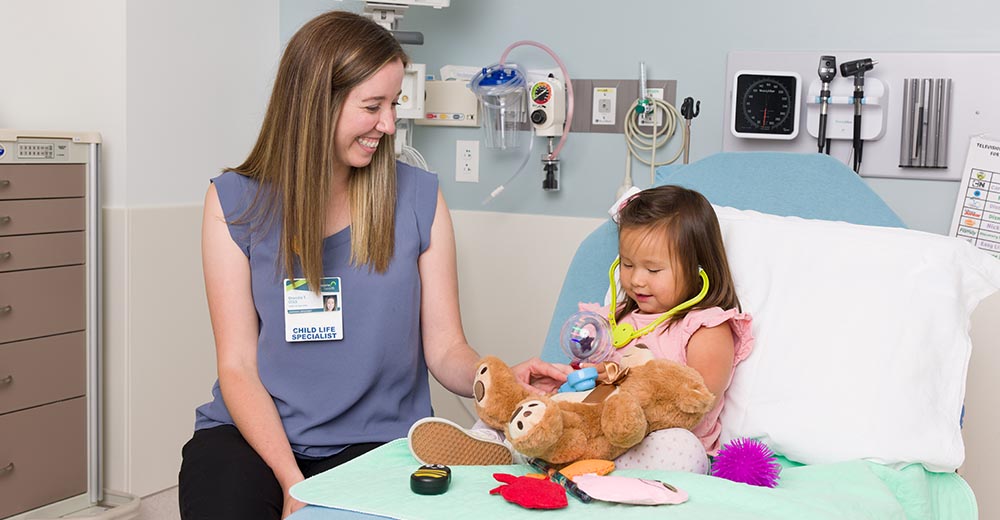Health Connection - September 2022

Getting Migraines Under Control

Anyone who thinks a migraine is “just a headache” has never experienced one. Migraine sufferers can be sidelined by intense headache pain lasting anywhere from four to 72 hours. This debilitating neurological disease affects more than one in ten people or roughly 12-15% of the population. In the U.S., healthcare and lost productivity costs related to migraine attacks are estimated to be as high as $36 billion each year.
A migraine attack often starts with a “prodrome,” which includes symptoms such as fatigue, sensitivity, or irritability. The prodrome may start hours or even days before the headache hits. Next may come a temporary neurologic change called an aura, which can manifest as a visual disturbance, numbness, weakness, or dizziness. Experienced by about 25% of migraine sufferers, the aura lasts between five minutes and an hour before the onset of the headache. Usually occurring on one side of the head, the headache is typically severe and associated with neck pain, nausea and vomiting, and sensitivity to light, smell, and sound. (The headache portion is only one piece of a migraine attack and could even be absent altogether.) Last is the “postdrome,” or the period following the headache before returning to baseline. Sometimes referred to as a “migraine hangover,” this phase can include cognitive fog and fatigue.
The clinical diagnosis of migraine is based your medical history, symptoms, and the results of a physical and neurological examination. Research on the cause of migraine attacks is ongoing but the condition is likely related to an electrophysiological phenomenon in the brain known as a cortical spreading depression. This increases the sensitization of certain nerves and triggers the release of serotonin and calcitonin gene-related peptides (CGRP), both important targets for treatment therapies.
Migraines appear to have a genetic basis, complicated by environmental triggers. According to the American Migraine Foundation, if one of your parents has migraines, you have a 50% chance of developing the disorder. An estimated 17% of women suffer from migraines, compared to 6% of men. In women, changes in estrogen levels due to menstruation, pregnancy, infertility treatments, and perimenopause can trigger migraine attacks. In general, migraines can decrease after menopause as there is less fluctuation in hormones. However, migraines may initially worsen with menopause.
Migraine Triggers
Migraine triggers differ from one person to the next and can change over the course of a lifetime. Think of migraine triggers and migraines the way you think of allergens and allergies: your body is having an abnormal response to something ostensibly harmless. Research has shown that totally avoiding allergens can increase sensitization. The same may be true of migraine triggers. Developing a coping mechanism through gradual exposure may help promote desensitization. Common triggers include:
- Stress
- Hormonal changes
- Changes in diet
- Weather, especially barometric changes
- Changes in your sleep pattern, such as sleeping late or not getting enough sleep
- Certain smells: smoke in particular, as well as car exhaust, perfume, nail polish, pesticides, and cleaning products
- Neck pain
- Light, especially fluorescent lighting, flashing or flickering lights, and computer screens
- Alcohol
- Heat
- Exercise
- Certain foods, especially those containing nitrates or aspartame sweetener
Treatment
Treatment for migraines has come a long way over the past several years. Between lifestyle changes and preventive treatments to reduce the frequency of migraines, and more effective medications to treat an active migraine, there are now more options for managing them, including:
Lifestyle Changes: Making simple and consistent changes to your lifestyle and environment can help reduce the occurrence of migraine attacks.
- Keep a headache diary, on paper or with an app, to look for patterns that could indicate a trigger
- Maintain regular sleep patterns and try to get enough sleep
- Stick to routine meal schedules
- Exercise regularly but moderately
- Systematically eliminate potential triggers to see what makes a difference—if avoiding that suspected trigger reduces the severity and frequency of your symptoms, that’s a win for you
Medication: Migraines have traditionally been treated with drugs that were developed for other indications, such as seizures, high blood pressure, or depression. The last three years have seen the introduction of new classes of medications specifically developed to prevent migraine. Since these medications, which mostly target the brain chemical CGRP, are new to the market, healthcare providers are still gathering clinical real-world experience to help them determine which medication might be most beneficial for a given patient. New drugs that target the brain and “turn off” an active migraine are also being introduced.
Botox: Using a tiny needle, Botox is injected into 31 locations on the forehead, sides and back of the head, and in the neck and shoulders, a pattern that has been proven to reduce migraine frequency and severity. Injections are given every three months.
Neuromodulation devices: These emerging therapies help re-establish normal function of the nervous system. Nerve stimulation techniques vary according to which nerves are targeted during the procedure, the device used, and how the stimulation is applied.
If you suspect you might have recurring migraine attacks, it’s important to talk to your doctor and get an accurate diagnosis. If you don’t have a doctor, we can help you find one. Together, you and your provider can determine the appropriate course of treatment to help you find relief.
Kerry Fellows is a nurse practitioner specializing in general neurology. She sees patients at MarinHealth Neurology | A UCSF Health Clinic.
Making the Emergency Room Less Scary for Kids

The young boy was bleeding from a deep cut on his eyebrow when his parents brought him in to the Emergency Department (ED) at MarinHealth Medical Center. It was clear the child needed stitches, but he was crying hysterically and too frightened to let anyone examine the injury. Mommy cuddled and daddy cajoled, but they just couldn’t calm him down.
That’s when the ED’s Child Life Specialist, Shandra Taylor, MS, CCLS came to the rescue, equipped with playdough, a stuffed animal, and a bubble gun. In a matter of minutes, Shandra had him laughing, smiling, and popping bubbles. To the great relief of his parents, the little boy even let the doctor examine his injury. Shandra stayed in the room, playing games with the young patient while the doctor stitched him up.
Affectionately known to her ED colleagues as “Mary Poppins,” Shandra has quite the bag of tricks. Buzzy Bee is used to help manage pain during needle sticks. Stress balls give youngsters something to squeeze when they feel nervous. Light up toys keep infants and toddlers entertained. But as Shandra explains, the most important aspect of her role is “To put the child and family at ease by validating their experience and feelings. I use my expertise in child development to explain procedures and treatments in an age-appropriate way, using play to bring a sense of normalcy, while supporting them in finding coping strategies to reduce fear, anxiety, and pain.”
Child Life Specialists’ Expertise
Child Life Specialists are clinically trained in the impact of illness or injury on a child’s development and emotional well-being. Their expert services include:
- Explaining illness, injury, and medical procedures to a toddler, child, or teen in a developmentally and psychologically appropriate way, using props such as dolls and pretend medical equipment when dealing with younger children
- Engaging in evidence-based, age-appropriate therapeutic play and distraction techniques to reduce a child’s fear, anxiety, and pain
- Offering children who are hospitalized opportunities for play and creative activities
- Providing information and support to the child’s family
- Working with parents to alleviate their child’s fear and stress
- Using art and play to help children express their anxiety and fears
- Helping children who require lengthy hospitalizations stay on track, socially and developmentally
- Addressing fear, anxiety, and bereavement in healthy children who are visiting a hospitalized relative
- Helping parents understand how to best support their child through a loved one’s illness or death
Child Life Specialist Training
Child Life Specialists are highly trained experts who must meet several requirements before taking the Child Life Professional Certification Examination, including:
- A bachelor’s degree in Child Life, Child Psychology, or a related field such as Human Development, Psychology, or Education
- A master’s degree in Child Life: Individuals with a degree in an unrelated field must complete 10 college-level courses in child life or a related field, at least one of which must be taught by a Certified Child Life Specialist (CCLS)
- A 600-hour internship or fellowship under the direct supervision of a Certified Child Life Specialist
Certified Child Life Specialists work in a variety of settings, including EDs, surgical and intensive care units, pediatric inpatient units, and children’s hospitals. They can also sometimes be found in community outreach programs and special needs camps. Once certified, Child Life Specialists are expected to participate in continued education to maintain their certification.
Our Ouchless ED
Our Certified Child Life Specialist is just one part of MarinHealth Medical Center’s child-friendly protocols as an “Ouchless” ED. Our emergency staff has been trained by pediatric emergency specialists from UCSF Benioff Children’s Hospital to communicate with children in an age-appropriate way. Whenever possible, we use needle-free injections and shot blockers to reduce injection pain or give children medication through alternative methods such as rapidly absorbed atomizers or nasal sprays. We even offer breathing treatment masks with animal faces to encourage compliance.
As Shondra puts it, “Every child and family bring their own set of unique strengths and experiences to the table. It's our job to support them by using their strengths to get them through the often tough and hard things we ask of them in the ED. We want to make their experience as easy as possible! It's a great feeling to know that we are helping children right here in our community.”
Vasectomy: Safe, Effective, Simple

Individuals and couples take many factors into account when making decisions about birth control—goals regarding the size of the family they would like, relevant health concerns, risks of the various options, and religious beliefs are among these factors. For men who don’t want children, or have all the children they want, vasectomy is a safe, permanent, form of contraception. Vasectomy has become increasingly popular form of birth control, chosen by more than 500,000 men each year in the United States.
Vasectomy works by blocking the flow of sperm from the testes into the seminal fluid (semen) produced by the prostate and adjacent seminal vesicles underneath the bladder. Under normal circumstances, mature sperm cells move from the testes to the prostate through the two vas deferens tubes, mixing with the seminal fluid due to contractions of these structures, which coincides with orgasm. Following vasectomy, sperm created by the testes is blocked at the site of obstruction, eventually depleting their energy stores, dissolving and being reabsorbed by the vas deferens lining. The ejaculation is otherwise entirely normal.
Vasectomy does not impact testosterone production, erections, libido, or the sensation of ejaculation. Many couples report that their sexual experience improved on account of the vasectomy being so reliable, freeing them from the inconvenience of condoms, the so-called rhythm method, and other forms of birth control.
How it Works
Modern vasectomy is almost universally performed by the so-called ‘no scalpel’ technique with local anesthesia in the office setting. In this procedure, a tiny puncture is made in the scrotal skin below the penis. The physician lifts a small section of the vas deference out of the scrotum, cuts, and cauterizes it or uses a clip or suture to create an obstruction. The procedure is done for each of the tubes, on the right and on the left. The skin puncture heals without a suture as it is so small. The procedure will typically take 15 minutes. For patients who are especially concerned about anxiety or pain during medical procedures, vasectomy can be performed with IV sedation or light general anesthesia in a surgery center setting. Learn more about vasectomies and other men’s sexual health services at MarinHealth.
Most men experience only very mild discomfort after vasectomy, and typically use anti-inflammatory agents and cold packs to manage the immediate postoperative discomfort. The patient should avoid activity for 2 days, and then avoid strenuous activity for an additional 5 days. This sort of reduced activity will minimize the risk of swelling and bruising.
It is important that couples continue to use a reliable form of birth control for up to 12 weeks after the vasectomy, during which time the sperm in the vas deferens and prostate will clear. This will usually be accomplished with 20 ejaculations over that time period. The physician performing the procedure will arrange for the patient to provide an ejaculate specimen for evaluation at a laboratory to confirm that sperm are no longer present at the end of the recovery period. At that point other forms of birth control can be discontinued.
Common concerns about a vasectomy include:
- Effect on sexual health. The level of satisfaction with vasectomy for both the patient and his partner is typically very high. After a relatively short recovery, patients resume full physical and sexual activity, and the procedure does not impact sexual function, testosterone production, or the experience of ejaculation. Ninety-eight percent of ejaculate fluid is produced in the prostate seminal vesicles, and the two percent that is no longer delivered from the testes is not perceptible to the patient or partner.
- Long-term complications. The risk of chronic genital pain is very low, perhaps no different than it is for patients who have not undergone vasectomy. Prostate cancer has been speculated as a risk, though this appears to be due to the likelihood that men who undergo vasectomy are also screened for prostate cancer. There is no demonstrated connection that interruption of the flow of sperm has an impact on prostate function or prostate health.
A Serious Decision
Vasectomy should be approached as a permanent form of birth control, in contrast to other forms that are easily discontinued (condoms, oral contraceptive pills, IUD, etc). For example, in Marin County vasectomy is a popular form of birth control for couples, and it is very rare for men undergoing vasectomy to later return for consideration of vasectomy reversal or other technologies to have additional children following vasectomy. This may be due to the fact that couples start families later and pursue vasectomy later than others.
For the small percentage of men who do decide to reverse their vasectomy, a vasectomy reversal procedure can be performed with a surgical microscope and will typically have success rates as high as 80 or 90% if performed within 10 years of the vasectomy. After 10 years there appears to be a significant drop in success rates, likely due to scarring that occurs over a long period of time in the dormant vas deference. An alternative to vasectomy reversal is for sperm to be removed via a needle under local anesthesia. This sperm can then be combined with an egg for in vitro fertilization.
Getting Started
It is not necessary to see your primary care physician to schedule a vasectomy. You can call a urologist directly for a consultation. The urologist will discuss the procedure, including risks and alternatives. The board-certified experts at MarinHealth Urology are known throughout the Bay Area for their state-of-the-art urologic care and personalized approach. MarinHealth’s Urology Clinic is part of UCSF Health, and our team has extensive experience performing successful vasectomies. Find a urologist here or call 1-800-996-9644 for a referral.
Patrick Bennett, MD is a urologist practicing at MarinHealth Urology | A UCSF Health Clinic.
Bike Safety: The Wheel Deal
Cycling is a great way to get fresh air and exercise. If you bike to work, you’re reducing your carbon footprint and sneaking in a workout at the same time. Here in Marin, with our great weather and active population, cycling is popular year-round, which unfortunately results in numerous bike injuries. At MarinHealth Medical Center, our emergency department regularly treats a full scope of bike injuries, from leg abrasions to rib fractures and clavicle fractures and collapsed lungs. Concussions are the leading injury we see after bicycle crashes.
According to the CDC, around 1,000 bicyclists die and over 130,000 are injured in crashes in the U.S. each year. In 2018, a five year study on road collisions in California showed Marin County had the second highest rate in the state of accidents involving bicycles. In fact, here in our county, between 2012 and 2016, bicycles were involved in 30% of accidents that resulted in death or severe injury. That’s why it’s so important to follow the simple safety tips listed below.
- Always wear a helmet. Wearing a properly-fitted helmet can reduce your risk of serious head injury by 70%, so never get on your bike without it—even if you’re just riding in your neighborhood or popping out for an errand. Look for a label that ensures your helmet has been certified by the Consumer Product Safety Commission. Your helmet should fit securely on your head without rocking more than one inch backwards and forward, or from side to side. Follow the guidelines of the National Highway Traffic Safety Administration to properly fit your helmet, including:
- Make sure the helmet is snug by adjusting sizing pads or fit ring
- Wear the helmet so it’s level on your head, covering your forehead and not tipped backwards or forward
- Adjust the side straps to form a V slightly in front of your ears and center the buckle on the chin strap under your chin—buckle and tighten the chin strap to fit snuggly
Replace your helmet every 5-7 years, or sooner if it has significant wear and tear, or is noticeably bleached or faded. Replace your helmet immediately if you’re involved in a crash that could have compromised the structural integrity of your helmet. For children, helmets may need to be replaced every year as they grow to insure proper fit and protection. View more information on children’s helmet safety.
- Keep your bike maintained. Always give it a good once-over before riding. Check your brakes regularly. Make sure there are no broken or loose parts. Oil the chain and pump the tires. Adjust and lock the seat to the right height. Equip your bike with reflectors on the rear, front, pedals and spokes, a rear-view mirror, and a horn or bell.
- Stay visible. This is especially important at night or on one of our famous Bay Area foggy days. If you must ride at night, wear fluorescent, reflective clothing and use flashing lights. If you are riding on country roads after dark, make sure your light is bright enough to reveal potholes and potential obstacles. Keep your lights charged or carry a spare set.
- Wear sunglasses to protect your eyes from bright sunlight, dust, and bugs.
- Follow the rules of the road and ride safely. Familiarize yourself with the geography of where you’re riding, as well as traffic laws. Keep your head up and look out for opening car doors and other potential hazards. Always stop at stop signs. At intersections and before entering traffic, stop and look left, right, left again and then, over your shoulder. Don’t wear ear buds while you ride. You want to be able to hear a car or siren before it gets to close. Use hand signals and always ride single file in the direction of traffic.
Extra tips for mountain bikers
- Wear an MIPS helmet. MIPS stands for Multi-directional Impact Protection System. Biking accidents can cause rotational strain on the brain, which can result in severe injuries, even when the biker is wearing a conventional helmet. MIPS technology absorbs some of the impact of a crash and reduces the rotational motion of the brain.
- Protect other parts of your body. Consider wearing safety gear such as knee, elbow, and arm pads to reduce the severity of injuries in the event of a crash. Gloves will improve your grip on the handlebars, give you better control, and protect your hands if you fall off.
- Get to know the trail and know your limits. If you choose to take on a new trail, learn the lay of the land. If needed, dismount and walk the more challenging parts and blind corners.
- Bring a small first aid kit in your backpack or attached to the frame of your bike.
- Stay hydrated. Always carry plenty of water during the ride. Hydration packs can hold more water than a conventional water bottle and you can mount them on your bike frame.
- Carry high-protein food to keep your energy up.
- Use GPS Navigation. If you have an accident, your GPS tracker will help rescuers locate you.
Riding a bike is a fun and healthy activity that can be enjoyed at any age. Just make sure you follow a few precautions and invest in the right protective equipment to help keep you stay safe and avoid injuries. Listen to a short podcast featuring Board Certified General Surgeon Edward Alfrey, MD for more bike safety tips.
